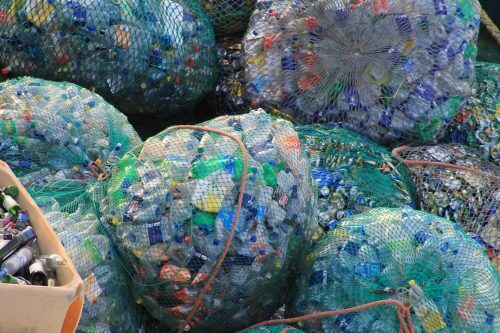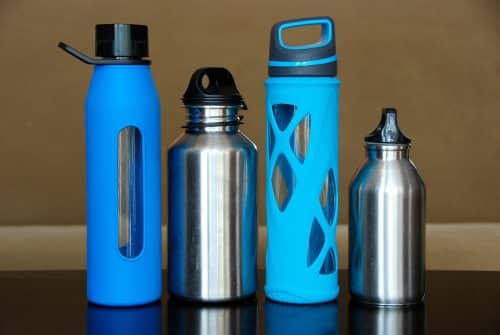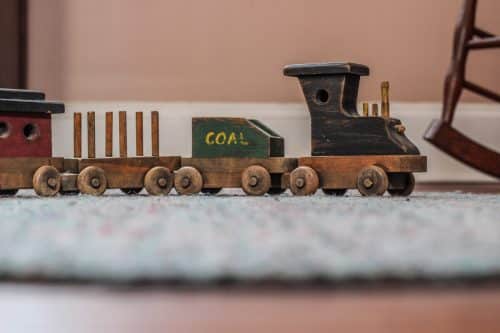Plastic is a cheap, strong and available material, and is found in almost every product we buy. The problem is that it is non-biodegradable and is gradually crowding our world with garbage. So how can you start to wean yourself off of it?

By Maya Falah, Angle, Science and Environment News Agency
Feel like you're drowning in plastic? Your'e right. About 300 million tons of plastic are produced in the world today every year. The plastic is used by us to produce countless products, all of which have to go somewhere after we use them and throw them away. Actually, if you really think about it, Every plastic item that is made ever in the world is still with us today. Even those who wish to avoid purchasing plastic products find it very difficult to do so in everyday life, as there are very few products that are not packaged in a plastic bag or packaging. It would not be an exaggeration to state that plastic has become in recent decades one of the biggest threats to the environment.
The main problem with plastic, from the consumer's point of view, is that it is a cheap but not very high-quality material, which wears out very quickly and is usually only suitable for short-term uses, which makes us buy new and quickly throw it away again and again.
All that plastic we all consume doesn't just disappear once we don't use it anymore. It accumulates on land andAlso at sea, where it causes significant damage to animals and the entire marine environment. 12 million tons of plastic reach the sea today every year - that is, a whole ton of plastic is added to the oceans every 2.6 seconds. Experts estimate that by 2050 the weight of plastic in the sea will be greater than the weight of the fish in it.
The cycle doesn't really solve the problem either. Most of the plastic we use is not recycled at all: in 2013, for example, only 14 percent of all plastic packaging in the world were transferred to circulation. In addition, even what is already recycled, not only wastes energy and resources in the recycling process, but also necessarily loses its quality in the process and is suitable for the production of certain products only (such as brass fabrics, carpets, clothes hangers, etc.) The garbage bin.
So no matter how we look at it, there is no escaping the bitter fact that we need to buy less plastic. We simply have no choice but to slowly but firmly push this material out of use and replace it with products made from alternative materials.
replace the plastic
The bag law that came out recently caused many of us to abandon plastic bags and switch to shopping baskets - made of fabric for the most part - and in any case, ones that are suitable for many uses. The apparent success of the law Shows that we have the ability to make a change and start slowly, but surely, in the difficult process of weaning ourselves from plastic.
Many of the products we all buy have substitutes that are not made of plastic, and they are often of much higher quality and can be used for much longer. So, for example, on the blog Sustainable Baby Steps, the blogger Tara gives examples ofDozens of products which we are all used to buying made of plastic, and which it turns out can also be obtained in other configurations: from surprising products made of bamboo such as computer keyboards, drinking straws and yoga mats, to products made of stainless steel such as reusable dinnerware, ice cube trays and more.
So here are some examples of products that we are all used to buying in their plastic version, while you can choose relatively convenient and cheap alternatives (and in many cases also much more beautiful) that can serve you for a long time:
Lunch boxes and packaging for sandwiches
If you have children of school age, work or any occupation that requires you to be outside the house most of the day, the use of lunch boxes is certainly not foreign to you; Many of us pack our lunch to go almost every day. For the most part, we usually do it in plastic boxes, or in plastic bags if it's a sandwich. The green blog treehugger suggests Seven alternatives For your traditional lunch boxes: among them are those made of stainless steel, divided into separate compartments to separate different types of food that offer a five-year product warranty; Japanese bento style boxes made of wood; And not necessarily a box: there is also a fabric bag made of wool and cotton with a detachable lining that can be removed and washed between meals. The sandwich bags also have a substitute: for example reusable packagingfor sandwiches and snacks. The bags are made of fabric and can be easily washed and used again and again. You can, of course, also simply wrap the sandwich in a cloth napkin or cloth diaper or for the investors among you - simply Sew fabric packaging Suitable at home.
Reusable drinking bottles

Each year, approximately 35 billion single-use plastic bottles are thrown away in the US alone. As mentioned, the recycling industry does not recycle all of them, and in any case it is a huge waste of resources and energy for the production of a disposable product as well as for its recycling. There are many reusable bottles on the market today, but many of them are still made of plastic - much more durable and suitable for repeated uses, but still... plastic. But there are also other options: many manufacturers offer today Bottles made of metals Miscellaneous: from aluminum which is extremely light weight, for example, from stainless steel which maintains the drinking temperature well as well Stainless steel that lasts for many years like new. And those who do not connect with the feeling or the taste of metal in their mouth, can today also get reusable drinking bottlesmade of glass in shapes, sizes anddifferent designs. And for parents among us - it is even possible to obtain Metal bottles and also Glass bottles Comfortable (with a thin coating of silicone - to prevent them from shattering during the many and inevitable falls they are expected to go through) for babies and children.
Toys and equipment for little ones
Every parent knows how much plastic waste is thrown away every day: starting with disposable diapers (which produce waste Weighing 53 to 112 timesmore than reusable diapers) to toys that break or lose their value very quickly in the eyes of children and find their way to the trash. So here too there are other options: reusable diapers have been making a comeback in recent years, and you can get quite a few types today, which are very different from the cloth diapers of the past and according to the testimonies of parents who use them - much more convenient to operate and wash; The use of cloth diapers is not only more pleasant for the baby - as evidenced by the fact that they prevent the infamous rash that many babies develop with the use of diapers - it is also a huge financial saving and a significant reduction in one of the main expenses of young parents. There are also toys for children that are not plastic: you can get them today a wide range של Toys made of different materials Like fabric, metal as well Of wood, Like game blocks, different and varied dolls, puzzles, rattles for babies and more.

There are many other examples of good plastic substitutes. Almost every plastic product today has an alternative from other materials, and some of these products are relatively simple to obtain in different versions. So it's true, today it's still not trivial at all: to purchase many of these products you still have to make a little more effort, but as our demand as consumers for worthy alternatives to more and more plastic products increases, so will their supply, and weaning ourselves from plastic will become much easier.
See more on the subject on the science website:

One response
With all the sympathy for the subject, this is demagoguery. If the problem is that plastic ends up in the sea, proper landfilling must be enforced.